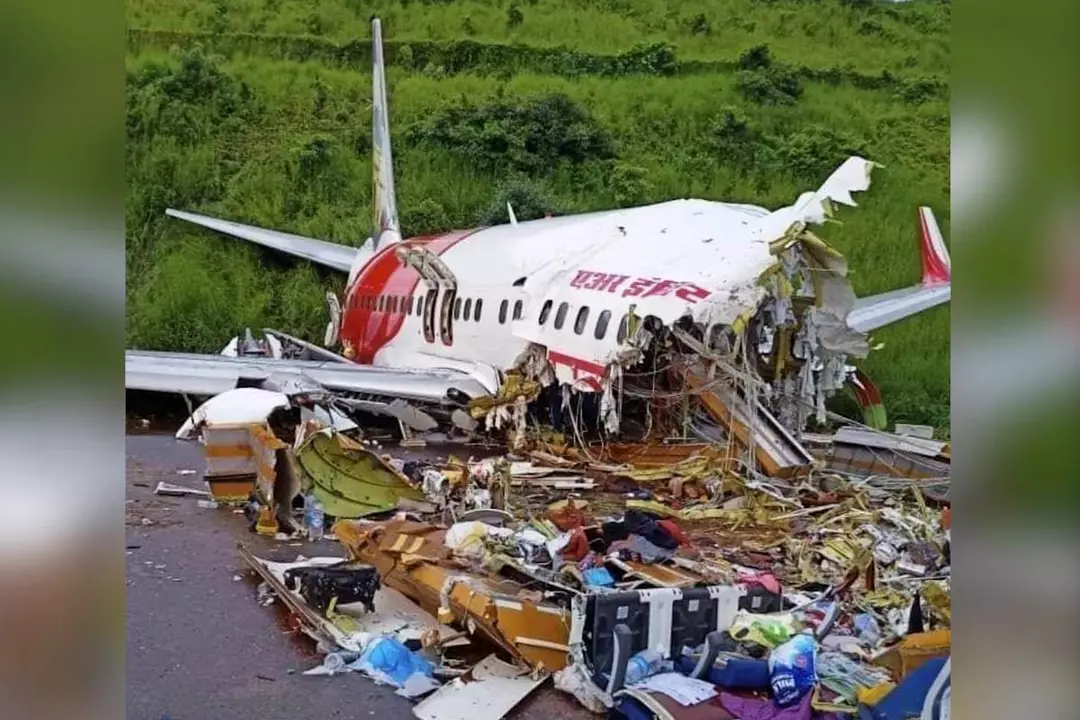Understanding the Calicut Air India Crash
On August 7, 2020, an Air India Express flight from Dubai, carrying 190 passengers and crew, skidded off the runway and crashed at Calicut International Airport, Kerala. In this article, we're going to explore what happened during this tragic event, and examine the possible causes and contributing factors of the crash.
The Journey and Weather Conditions
The flight, operated by Air India Express, was part of the Vande Bharat Mission, a repatriation effort to bring Indian citizens back home during the COVID-19 pandemic. The aircraft, a Boeing 737-8HG, departed from Dubai International Airport at 14:14 local time, heading towards Calicut International Airport in Kerala, India. Upon reaching Kerala, the weather conditions were far from ideal, with heavy rain and poor visibility. This was not the first time flights had to land in such adverse conditions at Calicut airport, but on this fateful day, it played a significant role in the tragic events that unfolded.
The Runway at Calicut International Airport
The airport in Calicut, also known as Karipur Airport, has a history of being challenging for pilots due to its tabletop runway. A tabletop runway is built on elevated terrain, with steep drop-offs at the ends. This design leaves little room for error during landings, as overshooting the runway can lead to catastrophic consequences. In 2010, another Air India Express flight overshot the runway at Mangalore, another airport with a tabletop runway, resulting in the deaths of 158 people. The similarities between the two crashes are hard to ignore.
The Final Moments of the Flight
As the aircraft approached Calicut airport, the pilots made their first attempt to land on runway 28. However, due to the poor visibility and heavy rain, they decided to abort the landing and go around for a second attempt. This time, they chose to approach runway 10, which was deemed to have better visibility. Unfortunately, upon touchdown, the aircraft skidded off the runway, broke into two pieces, and fell into a 35-foot gorge. The impact resulted in 21 fatalities, including both pilots, and left over 100 passengers injured.
Possible Causes of the Crash
While the investigation into the exact cause of the crash is still ongoing, several factors have been identified as potential contributors. The heavy rain and poor visibility certainly played a part, making it difficult for the pilots to judge their approach and land the aircraft safely. Additionally, the tabletop runway design at Calicut airport is a known hazard, particularly in adverse weather conditions. Preliminary findings from the aircraft's black box recordings suggest that the pilots may have landed the plane too far down the runway, leaving insufficient space to bring the aircraft to a halt before it skidded off the edge.
Lessons Learned from the Calicut Crash
As aviation safety experts continue to investigate the crash, it's crucial that we learn from this tragedy to prevent similar accidents from occurring in the future. This includes reassessing the safety of tabletop runways, particularly in regions prone to heavy rainfall and poor visibility. Additionally, improved training and awareness for pilots regarding the unique challenges of such runways, as well as stricter guidelines for landing in adverse weather conditions, could help mitigate the risks associated with these types of airports.
Moving Forward: The Future of Aviation Safety
While no amount of investigation can undo the loss and suffering caused by the Calicut Air India crash, it's essential that we use this tragedy as an opportunity to improve aviation safety. By analyzing the factors that contributed to the crash and implementing the necessary changes, we can work towards ensuring that such accidents become a thing of the past. As air travel continues to grow and evolve, it's our responsibility to prioritize safety and learn from past mistakes to create a safer future for all who take to the skies.
